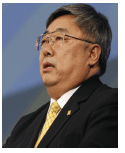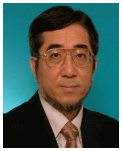DI Asia Pacific welcomes four newcomersto the magazine's Editorial Advisory Board
Doctors from China, Japan, India, and Australia have strengthened DI Asia Pacific's Editorial Advisory Board.
Doctors from China, Japan, India, and Australia have strengthened DI Asia Pacific's Editorial Advisory Board. Here, we introduce these new members to readers and provide a brief background on their careers and specialist areas.

• Prof. Jiang-Ping Dai (Beijing) was vice minister of the games services department for the Beijing Organizing Committee of the 2008 Olympic Games. He served as president of the Chinese Society of Radiology and as chief editor of the Chinese Journal of Radiology from 1996 to 2005. He established the Chinese Society of Neuroradiology in 1987 and currently serves as vice president of the Chinese Medical Association, Chinese Hospital Association, Chinese Doctor Association, and China Association of Medical Equipment. He is a professor of neuroradiology in the Beijing Neurosurgical Institute of Beijing Tiantan Hospital at the Capital University of Medical Services, as well as president of Beijing Tiantan Hospital and principal advisor for radiology to the Chinese Ministry of Health. Prof. Dai was a member of DI Asia Pacific's Editorial Advisory Board during the 1990s, and we are delighted he has agreed to rejoin our board.

• Prof. Hiroshi Fujita (Gifu, Japan) is president of the Japan Society of Medical Imaging and Information Sciences. He became a research associate in 1978 and an associate professor in 1986 at Gifu National College of Technology, having been a research associate at the University of Chicago (Illinois) from 1983 to 1986. He was appointed an associate professor in 1991 and a professor in 1995 in the Faculty of Engineering, Gifu University. He has been a professor and chair of intelligent image information since 2002 at the Graduate School of Medicine, Gifu University. His research interests include computer-aided diagnosis, image analysis and processing, and image evaluation in medicine. He has published over 700 papers in journals, books, and scientific magazines.

• Dr. Bhavin Jankharia (Mumbai, India) is editor-in-chief of the Indian Journal of Radiology & Imaging and director and chief of radiology services at Piramal Diagnostics-Jankharia Imaging. He has been a trustee with the Radiology Education Foundation since 2007. His main interests are chest, musculoskeletal, and cardiac radiology (all modalities, including PET). He completed his medical studies at Mumbai University and had spells at the University of California, San Diego; the Mayo Clinic in Rochester, Minnesota; and London's Royal Brompton Hospital, as well as Bombay Hospital and PD Hinduja National Hospital. He has published one book, 10 book chapters, 31 articles, and six posters and given more than 300 invited lectures.

• Dr. Zhonghua Sun (Curtin, Australia) is a senior lecturer in medical imaging science, department of imaging and applied physics, Curtin University of Technology. He was lecturer in medical imaging science at the School of Health Sciences, University of Ulster, U.K., from 2002 to 2005, having previously obtained his Ph.D. at the same institution and been a visiting scholar at the department of radiology, Kobe University Hospital, Japan. Between 1989 and 1998, he was a radiology registrar and consultant radiologist at Peking Union Medical College Hospital, Beijing.
His research interests include medical image processing, visualization, and analysis; radiation dose and image quality; 3D imaging of abdominal aortic aneurysm and endovascular stentgrafts; and 3D imaging of coronary artery disease and coronary stents. He has published 34 papers in peer-reviewed medical/ medical imaging journals over the last six years.
What New Lung MRI Research Reveals About Post-COVID-19 Conditions in Children and Adolescents
February 25th 2025Adolescents with post-COVID-19 conditions had 37 percent lower quantified lung perfusion than healthy control participants on phase-resolved functional lung MRI, according to findings from a recent prospective study.